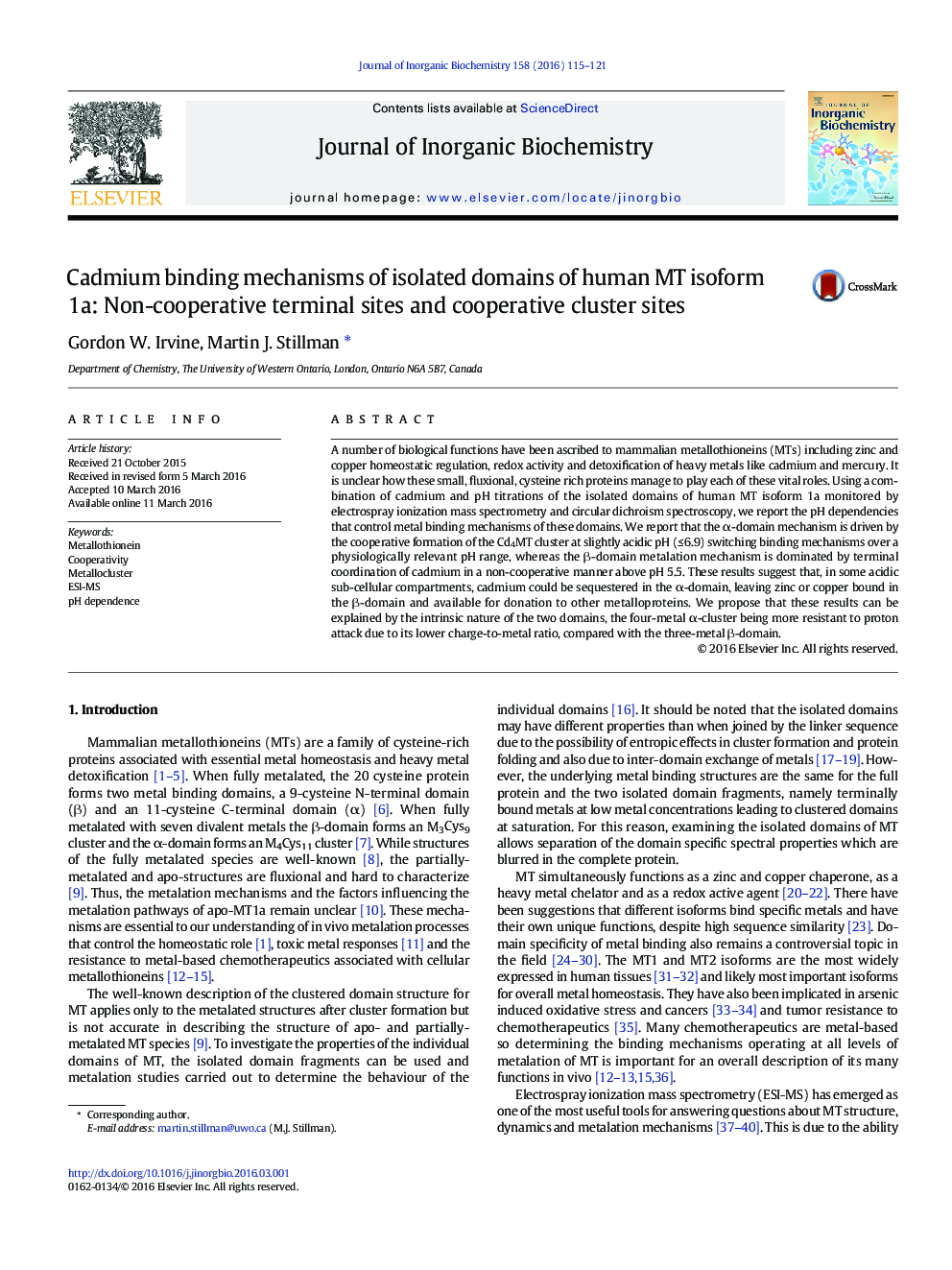| کد مقاله | کد نشریه | سال انتشار | مقاله انگلیسی | نسخه تمام متن |
|---|---|---|---|---|
| 1316845 | 1499429 | 2016 | 7 صفحه PDF | دانلود رایگان |

• We show the pH dependence of the Cd(II) binding mechanism of human MT isoform 1a domains.
• α-MT1a follows a cooperative, cluster-driven pathway below pH 7.5.
• β-MT1a binds Cd(II) via non-cooperative terminal coordination motif above pH 6.
• The biological importance of the domain divergence is discussed.
A number of biological functions have been ascribed to mammalian metallothioneins (MTs) including zinc and copper homeostatic regulation, redox activity and detoxification of heavy metals like cadmium and mercury. It is unclear how these small, fluxional, cysteine rich proteins manage to play each of these vital roles. Using a combination of cadmium and pH titrations of the isolated domains of human MT isoform 1a monitored by electrospray ionization mass spectrometry and circular dichroism spectroscopy, we report the pH dependencies that control metal binding mechanisms of these domains. We report that the α-domain mechanism is driven by the cooperative formation of the Cd4MT cluster at slightly acidic pH (≤ 6.9) switching binding mechanisms over a physiologically relevant pH range, whereas the β-domain metalation mechanism is dominated by terminal coordination of cadmium in a non-cooperative manner above pH 5.5. These results suggest that, in some acidic sub-cellular compartments, cadmium could be sequestered in the α-domain, leaving zinc or copper bound in the β-domain and available for donation to other metalloproteins. We propose that these results can be explained by the intrinsic nature of the two domains, the four-metal α-cluster being more resistant to proton attack due to its lower charge-to-metal ratio, compared with the three-metal β-domain.
The cadmium metalation behaviour of the individual domains of human MT isoform 1a. Below pH 7.5, the α-domain begins to cooperatively metalate, forming a stable 4 cadmium cluster, whereas the β-domain metalates non-cooperatively forming intermediates with cadmium terminally bound until below pH 6.25. Above pH 8 both fragments metalate via the stepwise, terminal cysteine mechanism.Figure optionsDownload as PowerPoint slide
Journal: Journal of Inorganic Biochemistry - Volume 158, May 2016, Pages 115–121